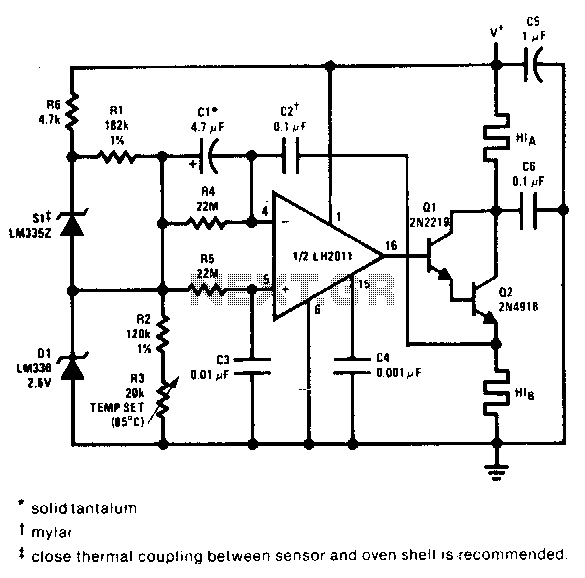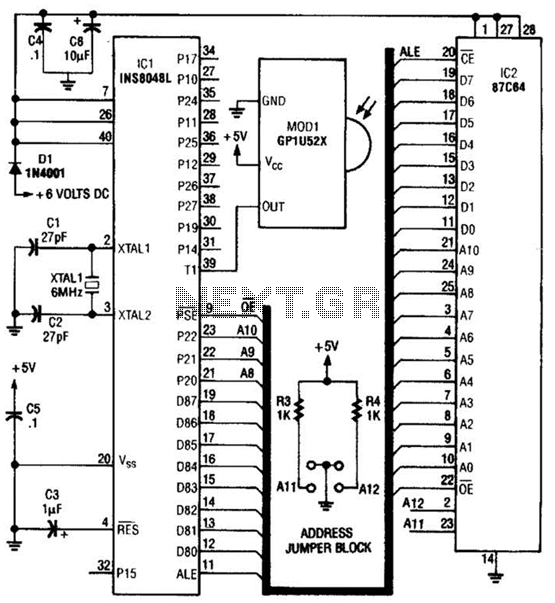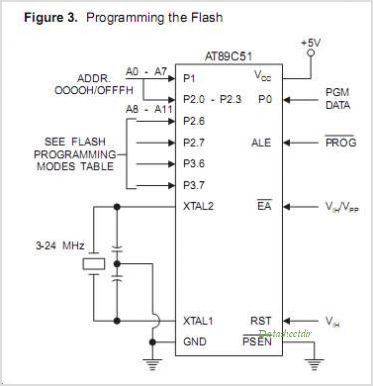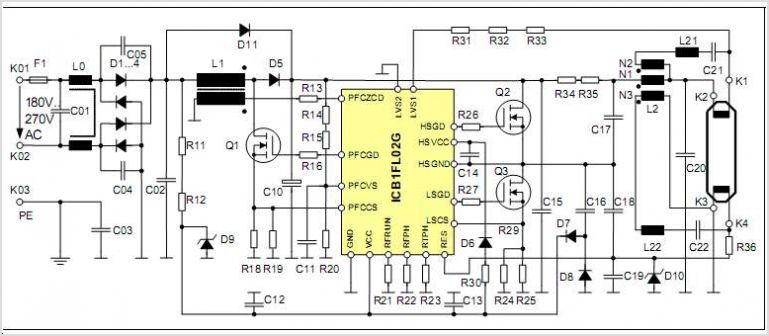
Bass-treble tone control circuits
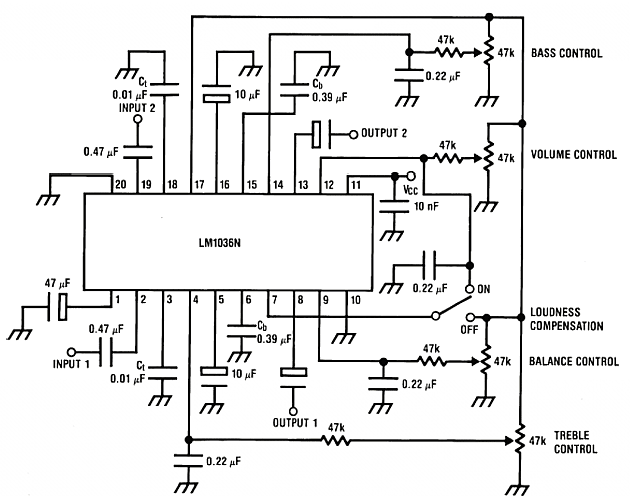
Low distortion bass and treble control for an amplifier. Circuit diagram. Electronics project.
The low distortion bass and treble control circuit is designed to enhance the audio quality of an amplifier by allowing precise adjustments to the low and high-frequency response. This circuit typically utilizes operational amplifiers (op-amps) configured in a tone control arrangement, which can effectively modify the amplitude of bass and treble frequencies while minimizing distortion.
In a typical implementation, the circuit may include a dual op-amp configuration where one op-amp is dedicated to bass control and the other to treble control. The frequency response can be adjusted by varying the feedback and gain settings of each op-amp. Passive components such as resistors and capacitors are strategically placed to define the cutoff frequencies for the bass and treble bands.
For instance, the bass control section can be designed with a low-pass filter configuration, where a potentiometer allows the user to increase or decrease the gain of frequencies below a certain threshold, typically around 100 Hz. Conversely, the treble control section employs a high-pass filter to boost or attenuate frequencies above a specified cutoff, often around 3 kHz.
The circuit diagram illustrates the connections between the op-amps, power supply, input, and output stages. Power supply decoupling capacitors are also included to ensure stable operation and reduce noise. Additionally, a bypass capacitor may be employed to filter out high-frequency noise from the power supply lines, further enhancing the performance of the circuit.
Overall, this low distortion bass and treble control circuit is an essential component for audiophiles and audio engineers looking to customize their audio experience by achieving a balanced sound profile tailored to individual preferences.Low distortion bass and treble control for amplifier. Circuit diagram. Electronics projectt.. 🔗 External reference
The low distortion bass and treble control circuit is designed to enhance the audio quality of an amplifier by allowing precise adjustments to the low and high-frequency response. This circuit typically utilizes operational amplifiers (op-amps) configured in a tone control arrangement, which can effectively modify the amplitude of bass and treble frequencies while minimizing distortion.
In a typical implementation, the circuit may include a dual op-amp configuration where one op-amp is dedicated to bass control and the other to treble control. The frequency response can be adjusted by varying the feedback and gain settings of each op-amp. Passive components such as resistors and capacitors are strategically placed to define the cutoff frequencies for the bass and treble bands.
For instance, the bass control section can be designed with a low-pass filter configuration, where a potentiometer allows the user to increase or decrease the gain of frequencies below a certain threshold, typically around 100 Hz. Conversely, the treble control section employs a high-pass filter to boost or attenuate frequencies above a specified cutoff, often around 3 kHz.
The circuit diagram illustrates the connections between the op-amps, power supply, input, and output stages. Power supply decoupling capacitors are also included to ensure stable operation and reduce noise. Additionally, a bypass capacitor may be employed to filter out high-frequency noise from the power supply lines, further enhancing the performance of the circuit.
Overall, this low distortion bass and treble control circuit is an essential component for audiophiles and audio engineers looking to customize their audio experience by achieving a balanced sound profile tailored to individual preferences.Low distortion bass and treble control for amplifier. Circuit diagram. Electronics projectt.. 🔗 External reference
Warning: include(partials/cookie-banner.php): Failed to open stream: Permission denied in /var/www/html/nextgr/view-circuit.php on line 713
Warning: include(): Failed opening 'partials/cookie-banner.php' for inclusion (include_path='.:/usr/share/php') in /var/www/html/nextgr/view-circuit.php on line 713
